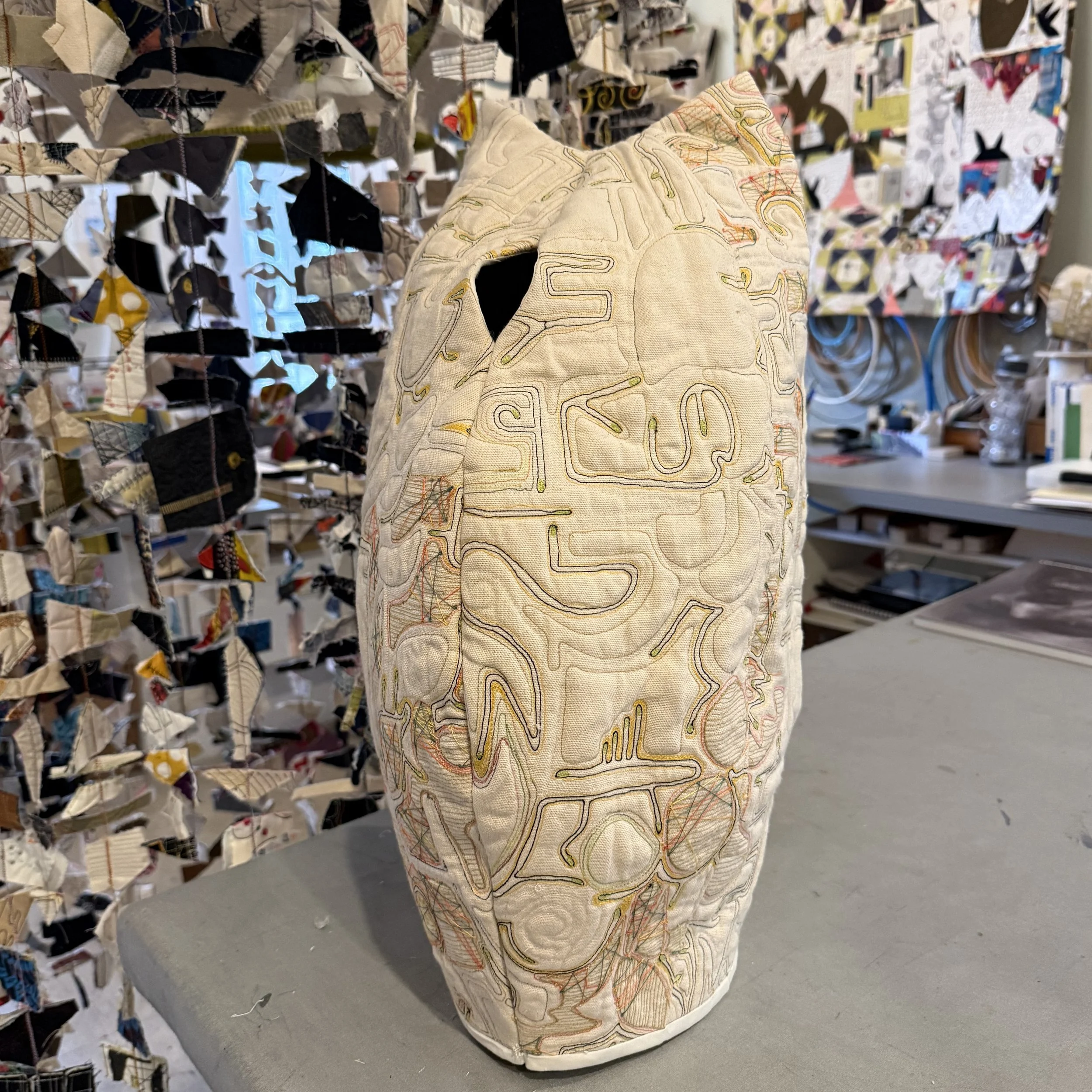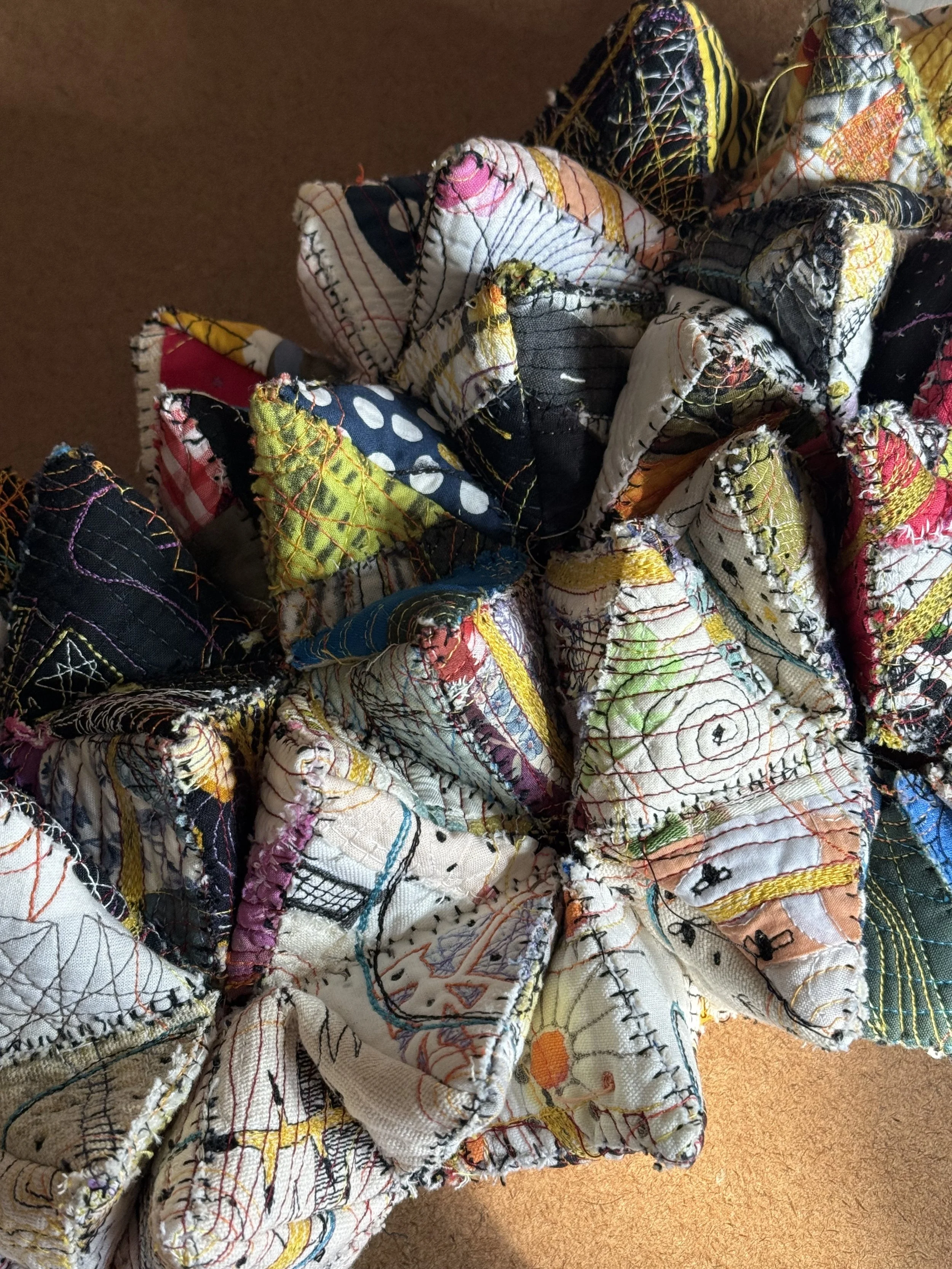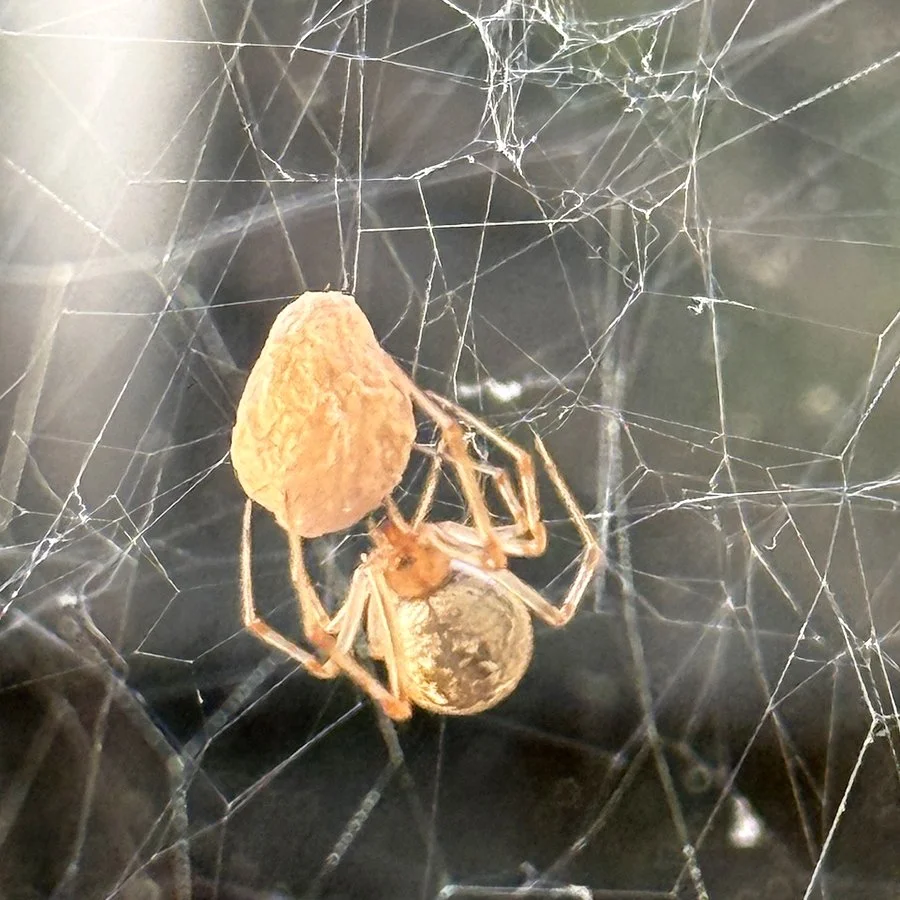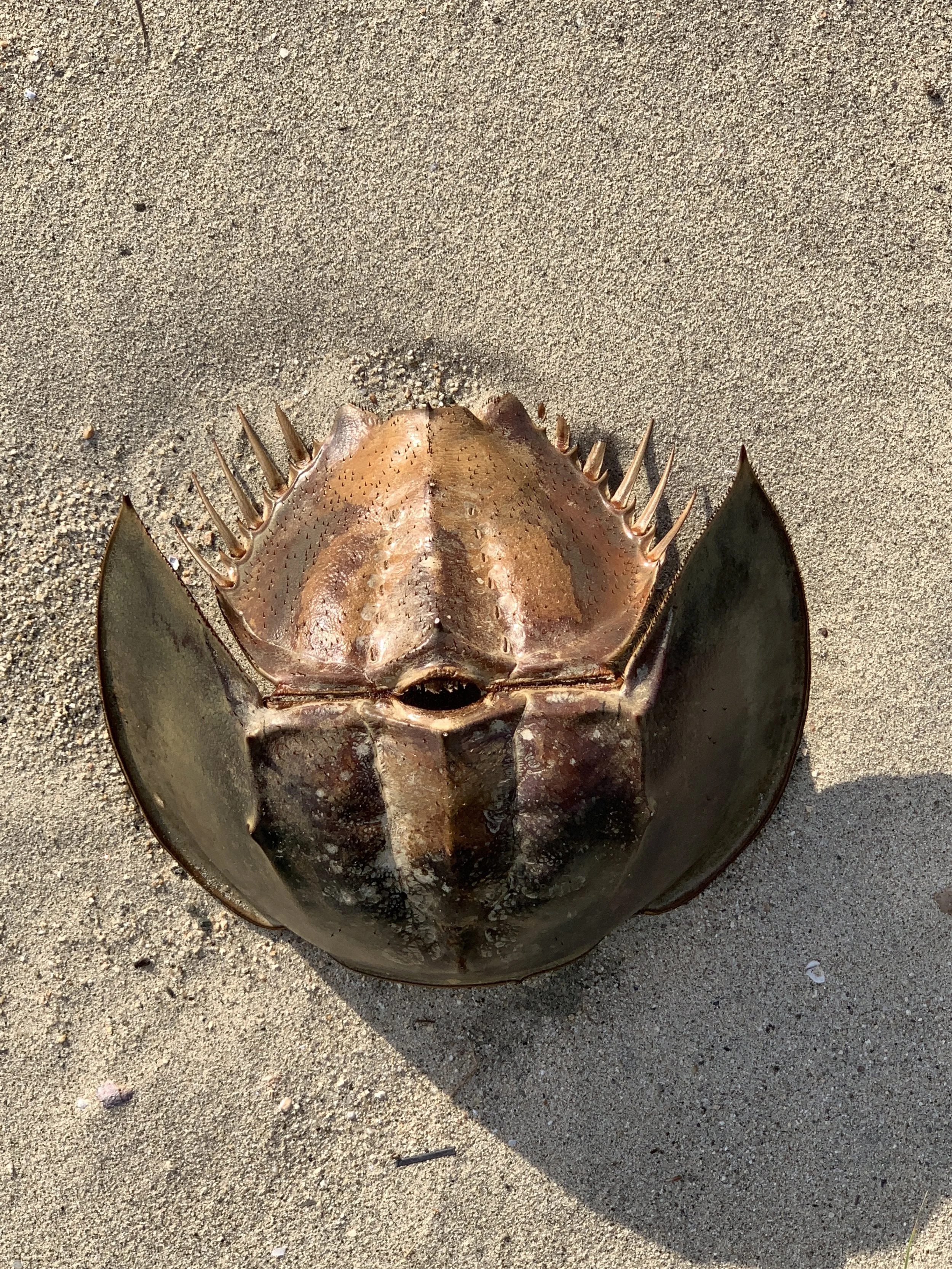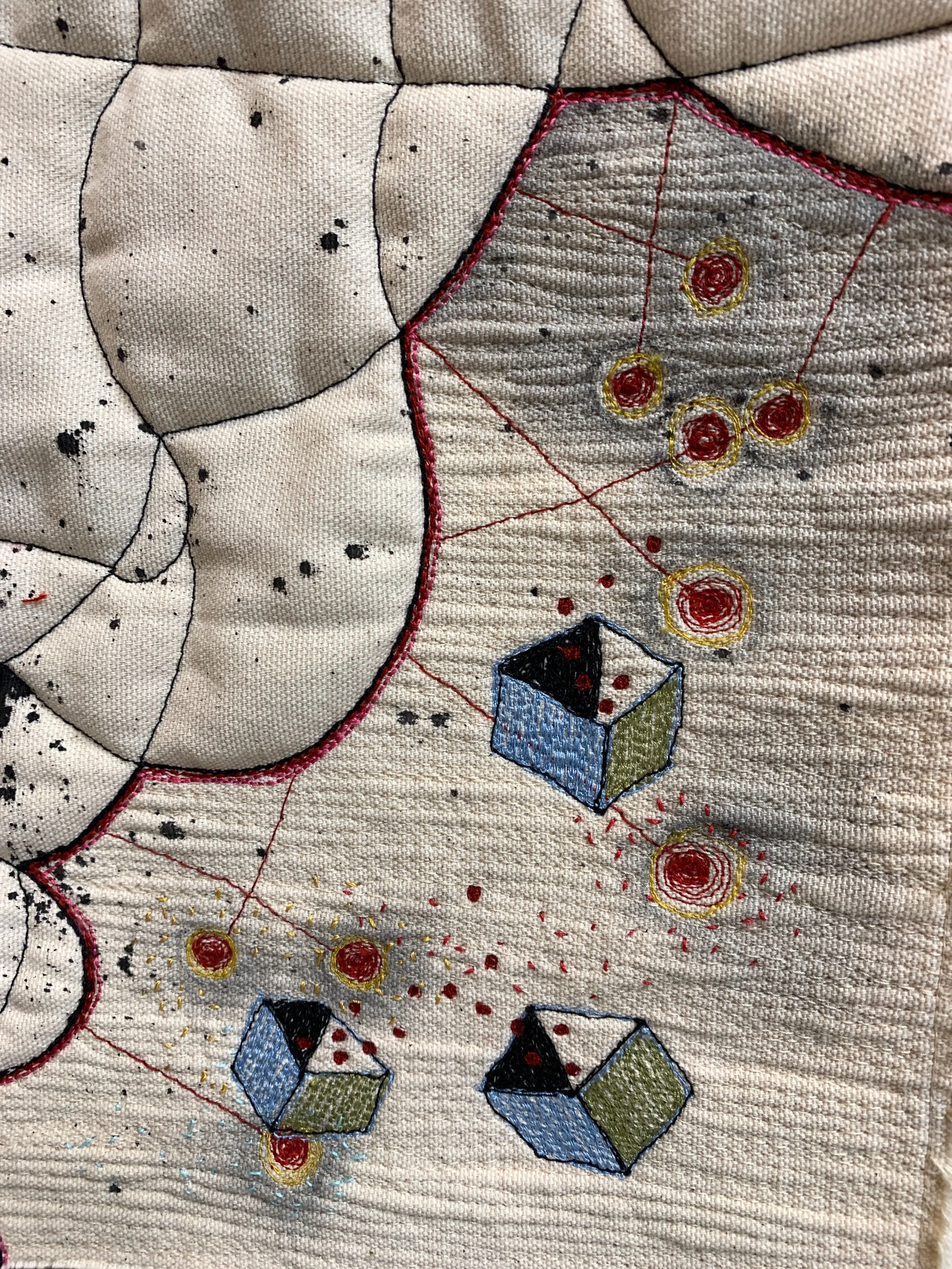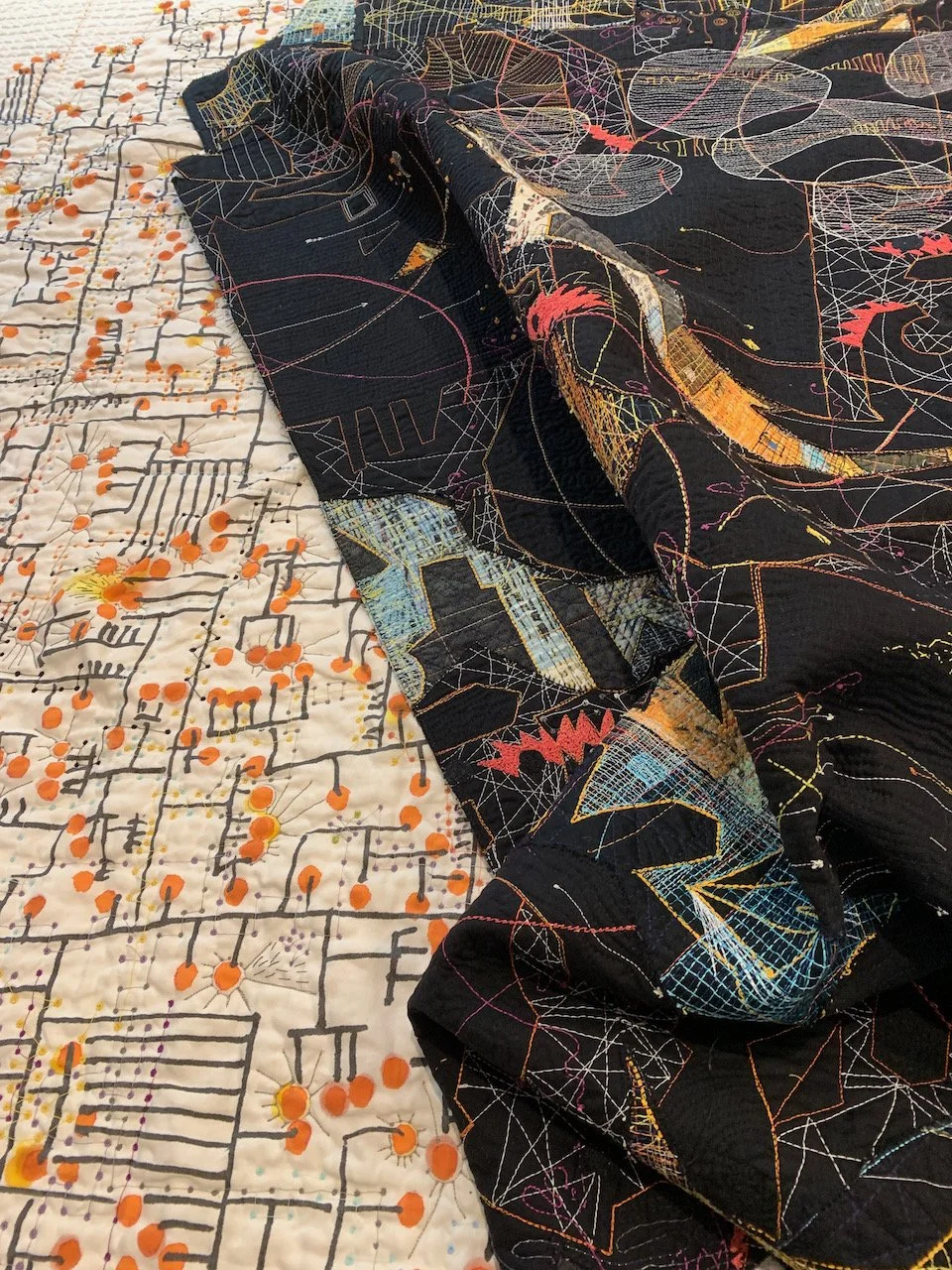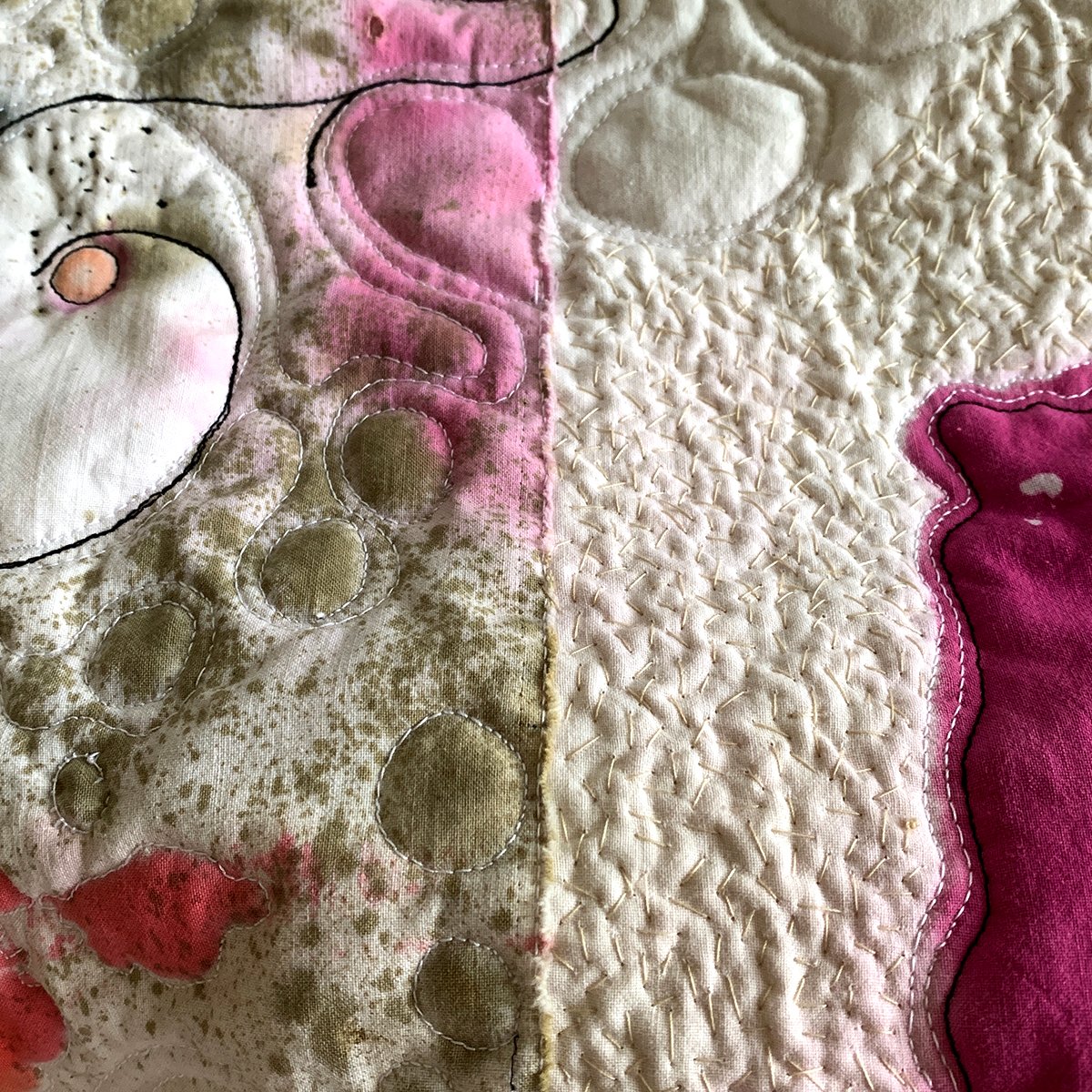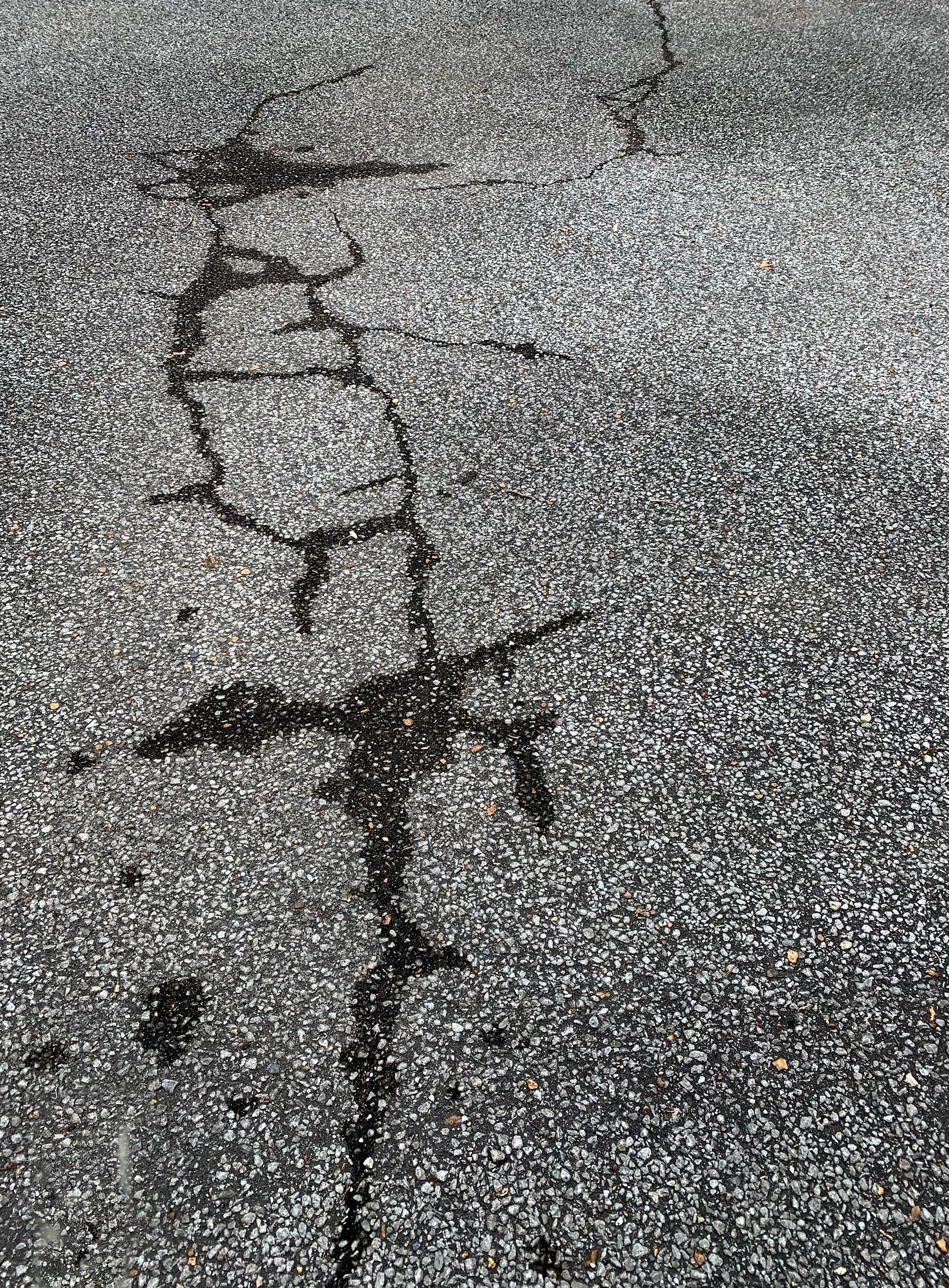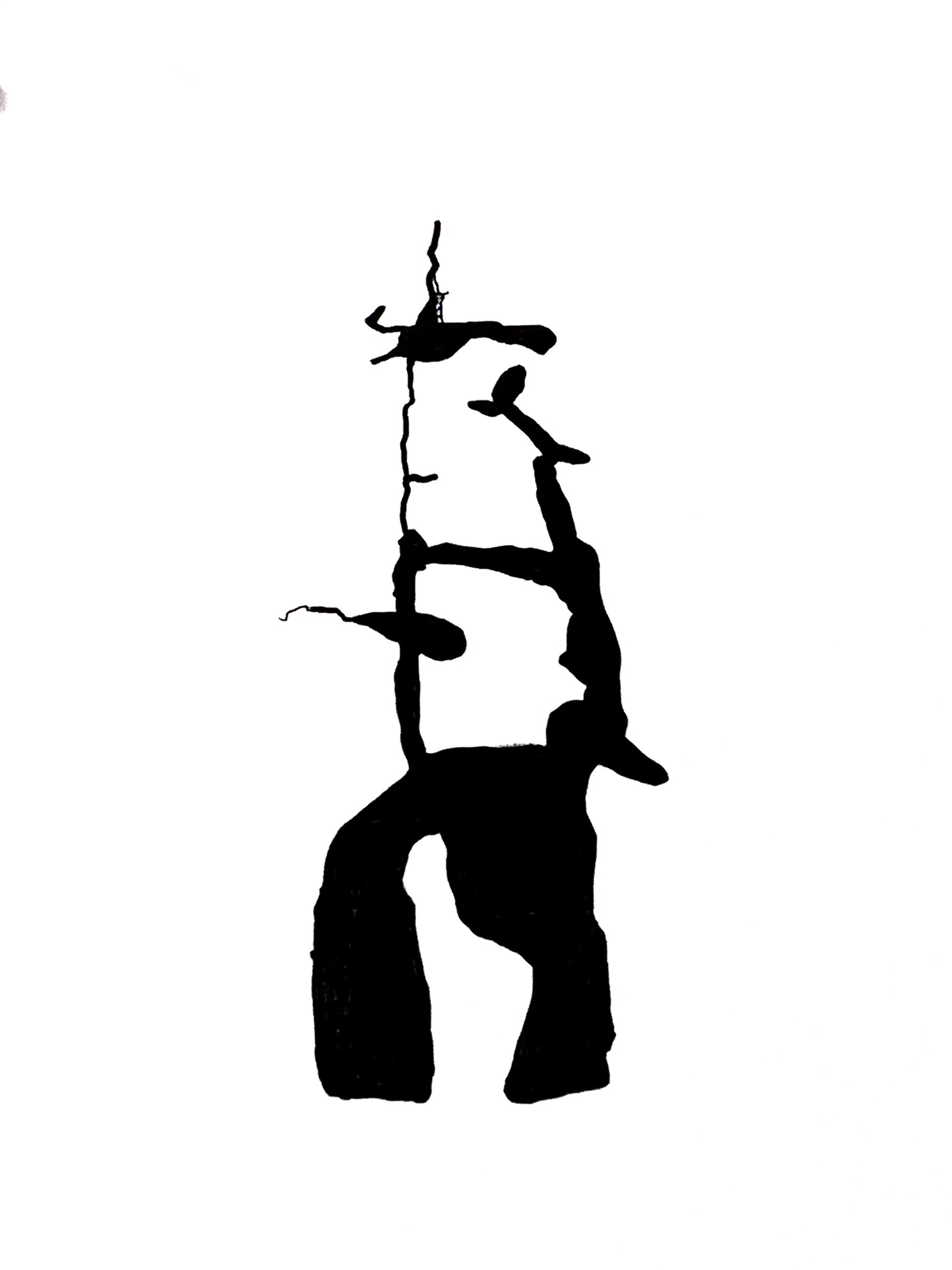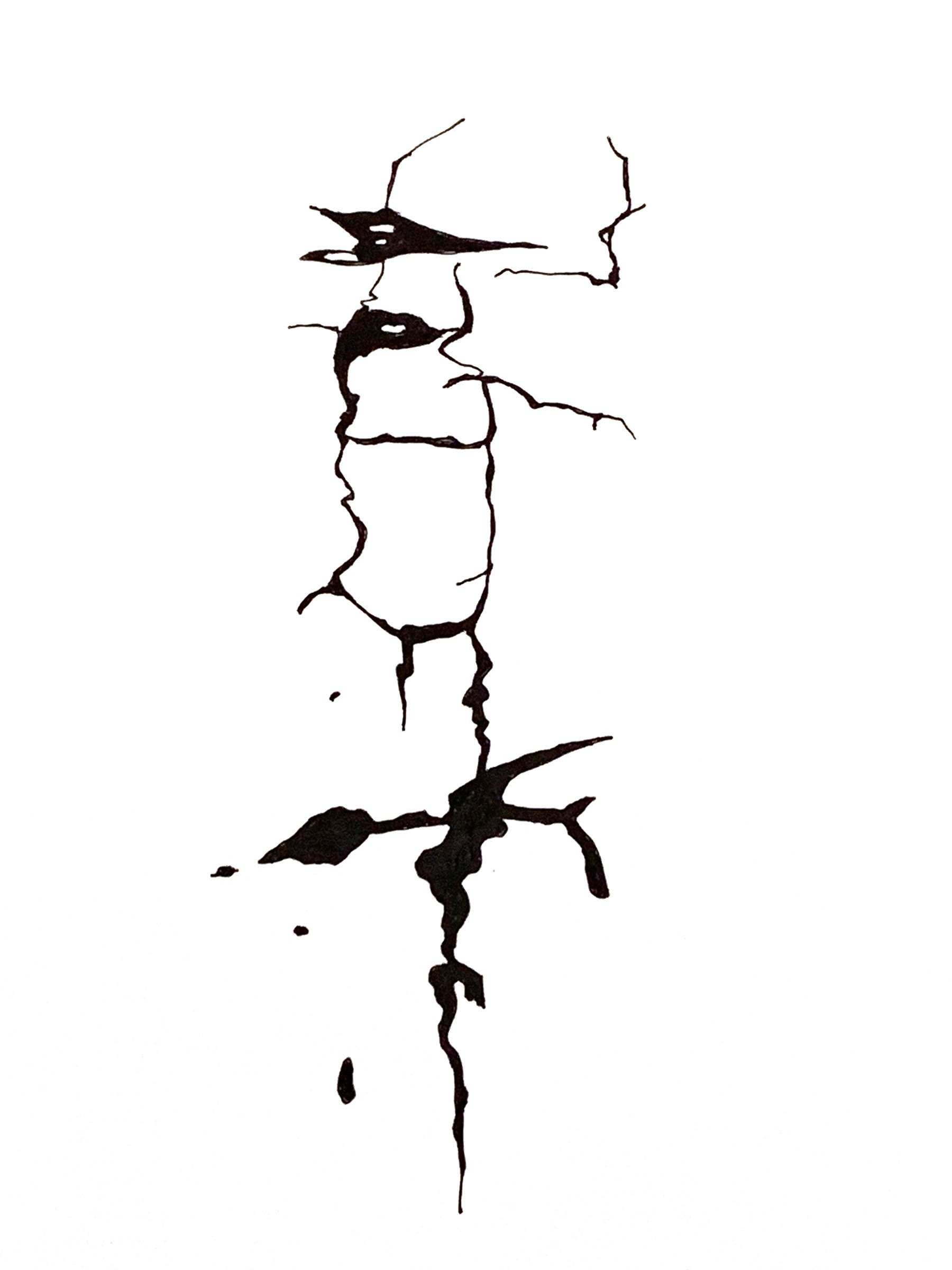I talk in my sleep these days. I think it’s all about watching and reading too much news and processing the insanity of our times. One night Jim said I sounded like a drill sergeant. I guess I am trying to fix things.
Let month I made this piece. I called it Disruptors in honor of the dialogue that is happening around disfunction and malaise. I intentionally made this chaotic and layered it with stitch and pattern.
I wasn’t happy with the results. It felt forced and cartoonish. (not that I don’t love a good cartoon) So I decided to cut it up.
The first cut is always the hardest. This practice has taught me that I can always find a way to a new solution. If I don’t it isn’t world shattering. There are too many world shattering things going on right now to worry about “ruining” a piece that I spent time on.
I decided to cut it into 1/2” and 1/4” strips so that I could stitch them back together to create a new pattern. What a pretty nest.
I looked around for more raw material so that I would have more contrasting colors to combine. I sacrificed a beast to this exploration.
I’m reading “The Women” by Kristin Hannah which is about nurses during the Vietnam war. There is a lot of talk about suturing wounds and mending broken bodies. Sewing these scraps together to create new shapes felt like triage to me. I think the world could use a battalion of nurses right now.
Sutured, 40” x 44”, Paula Kovarik, 2025
The piece undulates.
I may turn it horizontally.
